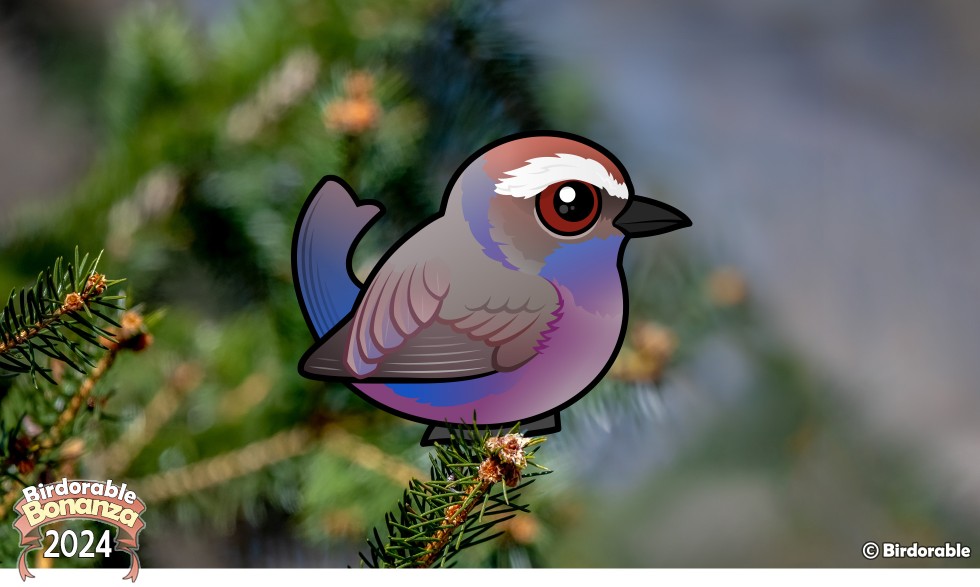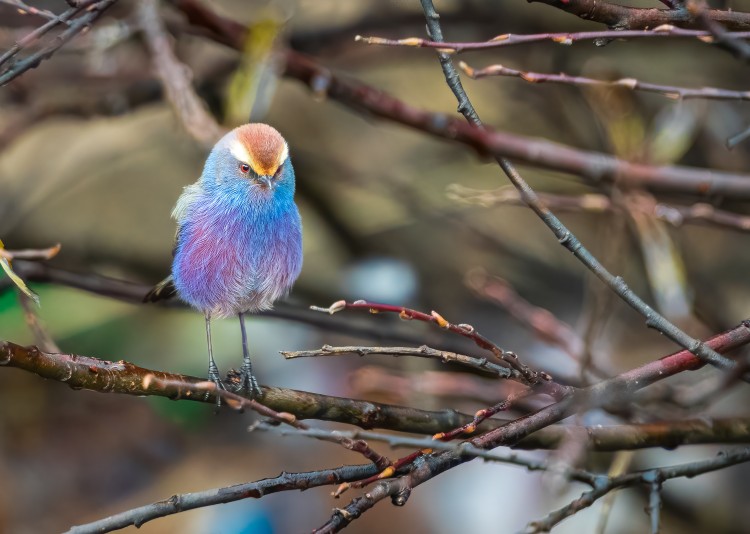2024 Birdorable Bonanza Bird #2
Tiny and Colorful: The White-browed Tit-Warbler

Today's new bird is a colorful little songbird native to parts of Asia: it's our Birdorable White-browed Tit-Warbler!
The White-browed Tit-Warbler is one of nature's tiny, colorful wonders. Native to the high-altitude regions of Central Asia, including the Himalayas, this little bird is a favorite among birdwatchers due to its vibrant plumage and elusive nature. Measuring only around 3 inches in length, the White-browed Tit-Warbler might be small, but its striking colors make it hard to miss if you're lucky enough to spot one.
The bird's name comes from its distinctive white eyebrow, which contrasts beautifully with its otherwise vivid appearance. Males, as seen in our Birdorable illustration, are especially colorful, boasting a mix of violet, blue, and reddish-brown feathers. Females are less flamboyant but still feature beautiful muted tones of blue and gray. This sexual dimorphism helps males stand out during the breeding season, while females blend more easily into their surroundings.

White-browed Tit-Warbler by Jay Eisenberg [CC BY-SA 2.0]
The White-browed Tit-Warbler thrives in cold, mountainous regions, usually between 2,200 and 3.500 meters above sea level -- and up to 5,000 meters in some areas! It prefers scrubby, bushy habitats where it can forage for its primary diet of insects and small invertebrates. You might also spot them flitting between bushes or darting into the open, moving quickly to avoid predators.
One remarkable feature of this species is its adaptability to extreme climates. Winters can be harsh in the regions they inhabit, but the White-browed Tit-Warbler’s thick plumage helps it retain heat. Despite the freezing temperatures, these birds remain active, hopping about energetically in search of food.
Their breeding season typically occurs from May to July. During this time, the birds build small, cup-shaped nests in shrubs or close to the ground. They like their nests to be soft, and, depending on the availability of materials, may use items like sheep wool, marmot hair, spider cocoons, and even down feathers from other birds to line the nest! Females lay around 4-7 eggs, which they incubate with minimal help from the males. Once the chicks hatch, both parents work together to feed and protect their young.
While the White-browed Tit-Warbler isn't considered endangered, its habitat faces threats from human activities such as overgrazing and deforestation. Conservation of their natural environment is crucial to ensuring the survival of this striking species and the biodiversity of its mountainous home.
Bird enthusiasts treasure sightings of the White-browed Tit-Warbler not just for its beauty but also for the challenge of finding it in its remote and rugged habitat. If you’re a birder traveling to Central Asia or parts of the Himalayas, keep your binoculars handy—you never know when you might catch a flash of its iridescent blue feathers flitting among the shrubs.
White-browed Tit-Warbler Gifts from Birdorable
Get ready for a fiery splash of feathers! Tomorrow’s bird is dressed to impress in bold and brilliant colors, and comes with a pious name. Can you guess who’s flying in next? 🤔














Comments
Leave a comment
Thank you!